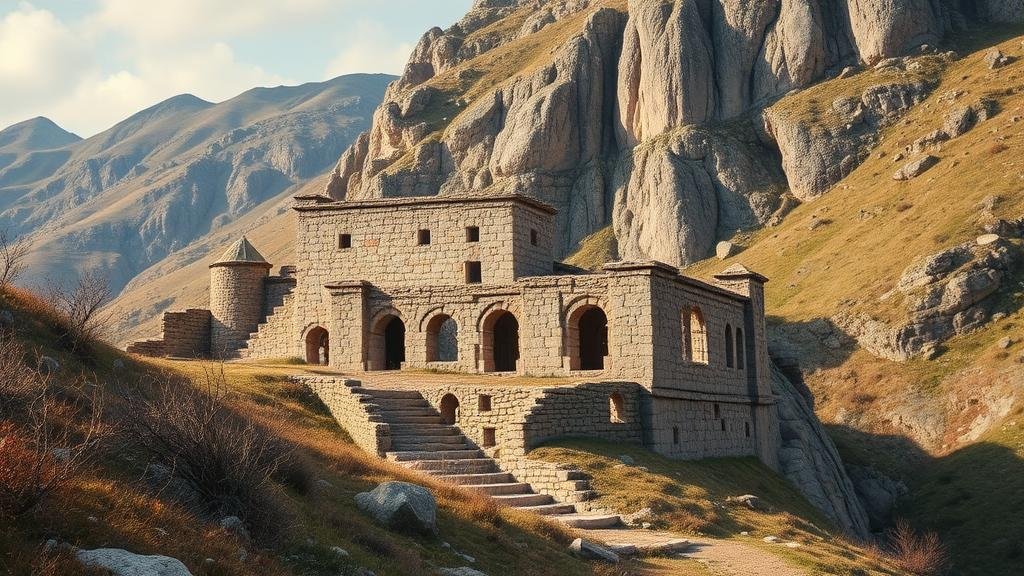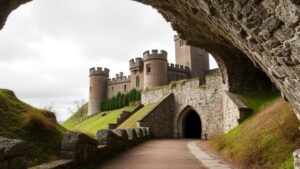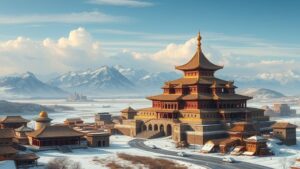Exploring the forgotten paths of the Caucasus for the “Ivory City” of Georgian myth.
Exploring the Forgotten Paths of the Caucasus: The Quest for the Ivory City of Georgian Myth
The Caucasus region, a culturally rich and ecologically diverse area straddling Europe and Asia, has long been a tapestry of legends, myths, and untamed landscapes. Among these legends is the fabled Ivory City, a concept derived from ancient Georgian folkloric traditions, which continues to captivate adventurers and historians alike. This article delves into the eerie beauty of the Caucasus mountains and the archaeological trails leading to the elusive “Ivory City,†combining myth with tangible exploration.
The Myth of the Ivory City
The Ivory City (or Savan in Georgian) is often described as a magnificent city made entirely of ivory, associated with prosperity and hidden knowledge. Legends tell of its existence tucked away in the Caucasus mountains, where it remains a beacon of hope, waiting for those brave enough to find it. The first recorded mention of this city can be traced back to the early works of medieval Georgian historians like Leonti Mroveli, describing its grandeur in ways that evoke the splendor of the mythical city of Atlantis.
Historical Context
The allure of the Caucasus has not waned through the centuries. By the 12th century, the region became a significant crossroads for trade routes that connected the East and West. Historical accounts suggest that the flourishing cities of Tbilisi and Kutaisi were surrounded by significant settlements reputed for their wealth and splendor. But, after successive invasions and political upheaval, many of these once-thriving cities fell into obscurity, leading to several legends surrounding hidden treasures and forgotten pathways, such as that of the Ivory City.
Geography of the Caucasus
The Caucasus Mountains stretch over 1,200 kilometers from the Black Sea to the Caspian Sea, serving as a natural barrier between Europe and Asia. This incredible mountain range is home to numerous valleys, glacial lakes, and an assortment of flora and fauna. Notably, the Greater Caucasus range features some of the highest peaks in Europe, such as Mount Elbrus, which stands at 5,642 meters.
The complex geography may have contributed to the preservation of ancient cultures and the emergence of myths like that of the Ivory City. Explorations on foot through this region unveil remnants of ancient settlements, fortresses, and monasteries carved into cliffs and hidden in valleys.
The Journey to Discover the Ivory City
Embarking on an expedition to uncover the mysteries of the Ivory City requires more than just physical stamina; it demands an understanding of local cultures, languages, and geography. Adventurers should consider the following pre-requisites:
- Strong hiking skills – Trailing through steep and rugged paths is essential.
- Knowledge of local languages – Learning a few basic phrases in Georgian can enhance interactions with villages along the way.
- Cultural awareness – Understanding local customs and traditions is crucial when visiting remote areas.
The primary regions to explore include:
- Upper Svaneti: Known for its unique medieval towers (called Svan Towers) and breathtaking mountain views.
- Tusheti: Famous for its dramatic landscapes and ancient stone villages that encapsulate the essence of Georgian architecture.
Archaeological Evidence and Expeditions
Several archaeological expeditions have ventured into the Caucasus, seeking to uncover remnants that may point to the existence of the Ivory City. In 2007, archeologists discovered the ancient remains in the region of Dzhikhaeri, suggesting that a prosperous civilization once thrived there. Artifacts such as pottery, tools, and other cultural remnants indicate a lifestyle rich in trade.
In 2011, the Caucasian Nature Reserve conducted an extensive survey in Upper Svaneti, where researchers found evidence of human habitation dating back to the Bronze Age. Though these discoveries do not confirm the existence of the Ivory City, they do highlight the regions rich history and support the narrative of lost cultures and forgotten paths.
Cultural Impact and Modern Interpretations
The myth of the Ivory City continues to influence modern Georgian culture through literature, art, and tourism. Local artists draw upon the legend to create works that inspire visitors to embark on their own quests for discovery. Also, eco-tourism in the region has begun to rise, with guided tours to historical sites weaving both the legend and the geography together to provide a unique cultural experience.
Actionable Takeaways
For those adventurous spirits looking to uncover the myth of the Ivory City, here are some key takeaways:
- Research the history and local legends before embarking on your adventure.
- Connect with local guides who can provide context and enrich your exploration experience.
- Document your journey – Your findings may contribute to the ongoing education about the regions significance.
The quest for the Ivory City embodies the spirit of exploration found within the rich tapestry of the Caucasus’ landscapes and stories. As more people step onto these ancient paths, the blend of myth and reality continues to unfold, revealing insights into forgotten civilizations and igniting the fires of curiosity. With every hike into these mountains, we come one step closer to unearthing the secrets that lie hidden within the folds of this enigmatic region.



